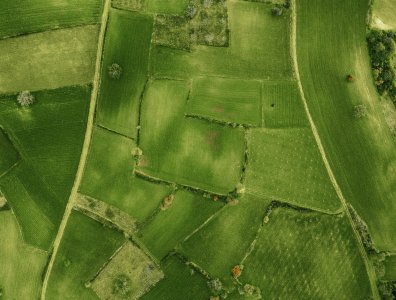Nature’s unpaid invoices are coming due
Boards must treat nature as their most critical supplier – before the costs of neglect show up on the balance sheet.
Imagine your CFO walking into the boardroom with alarming news. A critical supplier – one that underpins virtually every part of your business – has never been properly audited, has never been paid and is now showing signs of collapse. Worse still, there’s no replacement.
That supplier is nature.
At the IoD’s Climate Governance Forum and again at the 2025 Leadership Conference in Tāmaki Makaurau Auckland last week, climate strategist and Aotearoa Circle guardian Izzy Fenwick MInstD delivered this wake-up call to boards: “We’ve been underpaying nature – or more accurately, haven’t yet really paid her at all. The invoices got lost in the mail and now she’s showing signs of failure.”
It was a compelling metaphor that landed hard for board directors. Unlike typical ESG rhetoric, this wasn’t a values plea. It was a commercial risk briefing, dressed in supply chain language boards understand.
Fenwick’s central thesis was simple: nature is your most critical supplier and one your board is most likely neglecting. If nature were a company, it would be your most diversified, irreplaceable vendor. Its operating divisions include:
- Water Systems Ltd – providing sanitation, processing, cooling, irrigation and hydration across every sector. Without them, productivity dries up – literally.
- Climate & Air Services Inc. – regulating temperatures, protecting assets and enabling working conditions.
- Soil & Land Management Co. – controlling flood risk, nutrient cycles, crop productivity and erosion.
- Biodiversity Unlimited – ensuring pollination, pest control and overall ecosystem resilience.
No matter your sector – primary, manufacturing, services or tech – these “suppliers” show up on your balance sheet every day. They support supply chains, productivity, asset value, insurance terms and market access.
And this isn’t just about farms, factories or exporters. A cafe can’t operate without clean water for food prep and sanitation. A hairdresser needs it for every client. A hospital can’t function without stable temperatures and sterile water systems. A data centre relies on cooling and power infrastructure that, in turn, depends on climate stability and water availability. Every sector, from tech to tourism, is tied to these same natural supply lines.
Instead of treating nature as a mission-critical supplier, Fenwick says most businesses have treated it as a free, infinite, always-on resource – invisible in reporting, omitted from risk registers and largely absent from strategy.
Fenwick notes that replacing even part of nature’s services would require “billions in capex and infrastructure we simply don’t have – and never could build”. She frames this not as an environmental plea but as a capital allocation decision: invest now in protecting and restoring nature’s capacity, or face exponentially higher replacement and recovery costs later.
Boards are already seeing the consequences: the “debt collector” is at our door. Nature, Fenwick argues, is no longer quietly absorbing the cost of neglect. She’s calling in debt – through physical, financial and regulatory shocks.
“Nature didn’t just walk off the job. She sent in the debt collector: climate change – bringing billion-dollar weather events, supply chain disruption, rising insurance premiums and stranded asset risk.”
She says boards that continue treating nature as external to commercial risk are failing a basic tenet of governance: protecting long-term value.
In 2023 alone, weather-related insurance claims in Aotearoa totalled $2 billion, up from $335 million in 2022. Much of that loss was driven not just by climate, but by degraded natural infrastructure – over-cleared hill country, failing drainage, contaminated water and eroded soils.
And nature risk isn’t abstract. According to Aotearoa Circle data, 75% of NZX market capitalisation is made up of companies with moderate to high dependency on nature. That includes water, land productivity, biodiversity and natural hazard buffering.
The fiduciary blind spot
A growing number of global regulators, insurers and investors are embedding nature-related risk into decisions – whether boards acknowledge them or not. Lloyds of London now ranks New Zealand the second riskiest economy in the world, largely due to nature-linked disaster exposure.
“Boards that fail to map, disclose or mitigate nature-related dependencies are operating with blind spots that could violate both duty of care and financial prudence,” she says.
When boards delay action, those capital decisions shift to external actors – insurers, lenders and regulators. “They aren’t allocating blame. They’re allocating risk. That’s global capital markets telling you exactly where they see the exposure.”
“Ask yourself,” Fenwick challenged directors, “how stable are your organisation’s water sources, land assets, biodiversity and local climate? What happens if your aquifer is contaminated, your insurance premiums double, or the hillside above your asset gives way? It will make no difference whether you caused it or simply inherited it.”
The TNFD era is here
The rise of the Taskforce on Nature-related Financial Disclosures (TNFD) signals a seismic shift in how nature is treated by capital markets.
Forward-looking boards are already mapping their dependencies across land, freshwater, oceans and species. They’re engaging insurers, updating risk registers, embedding nature into ERM systems and pressure-testing assumptions. Many are realising that nature loss can have compound effects – affecting productivity, insurance, logistics, and access to capital simultaneously.
This isn’t ‘greenwashing’. It’s about economic resilience.
From silent partner to board priority
Fenwick offered a final challenge: nature will appear in your risk register – either by choice or by force. “That may come in the form of unaffordable insurance, asset write-downs, regulatory breaches or stranded infrastructure. But boards that wait will find fewer options and higher costs.”
Her advice?
- Serious mapping of all the risks to your business and supply chain
- Run the scenarios for your balance sheet when recurring flooding impacts logistics routes, or ruins a year’s supply of stock
- Lift board capability and push management for hard data and science-based plans
- Engage insurers and investors early
- Use frameworks such as TNFD to give you a structured way
- Act before the crisis, not after
Nature loss is a shared risk and shared risks demand coordinated responses. When the board minutes are reviewed and the risks are realised, the question won’t be: “Did we know?” It will be: “Why didn’t we act sooner?”
Foresight isn’t fearmongering, it’s governance, she says. And the directors who act on it will be the ones remembered for steering their organisations through the age of ecological risk.
This article appears in the spring edition of Boardroom magazine.



